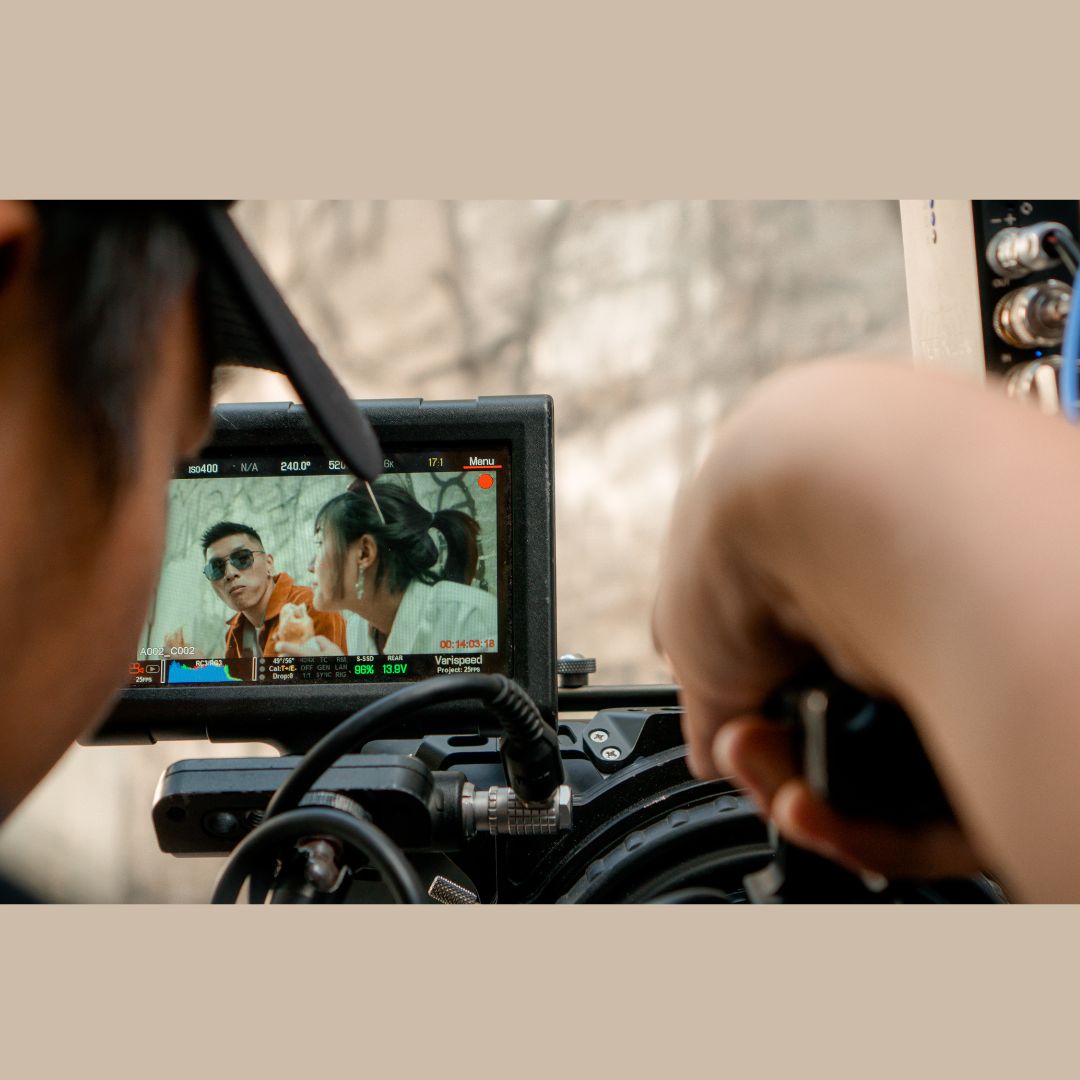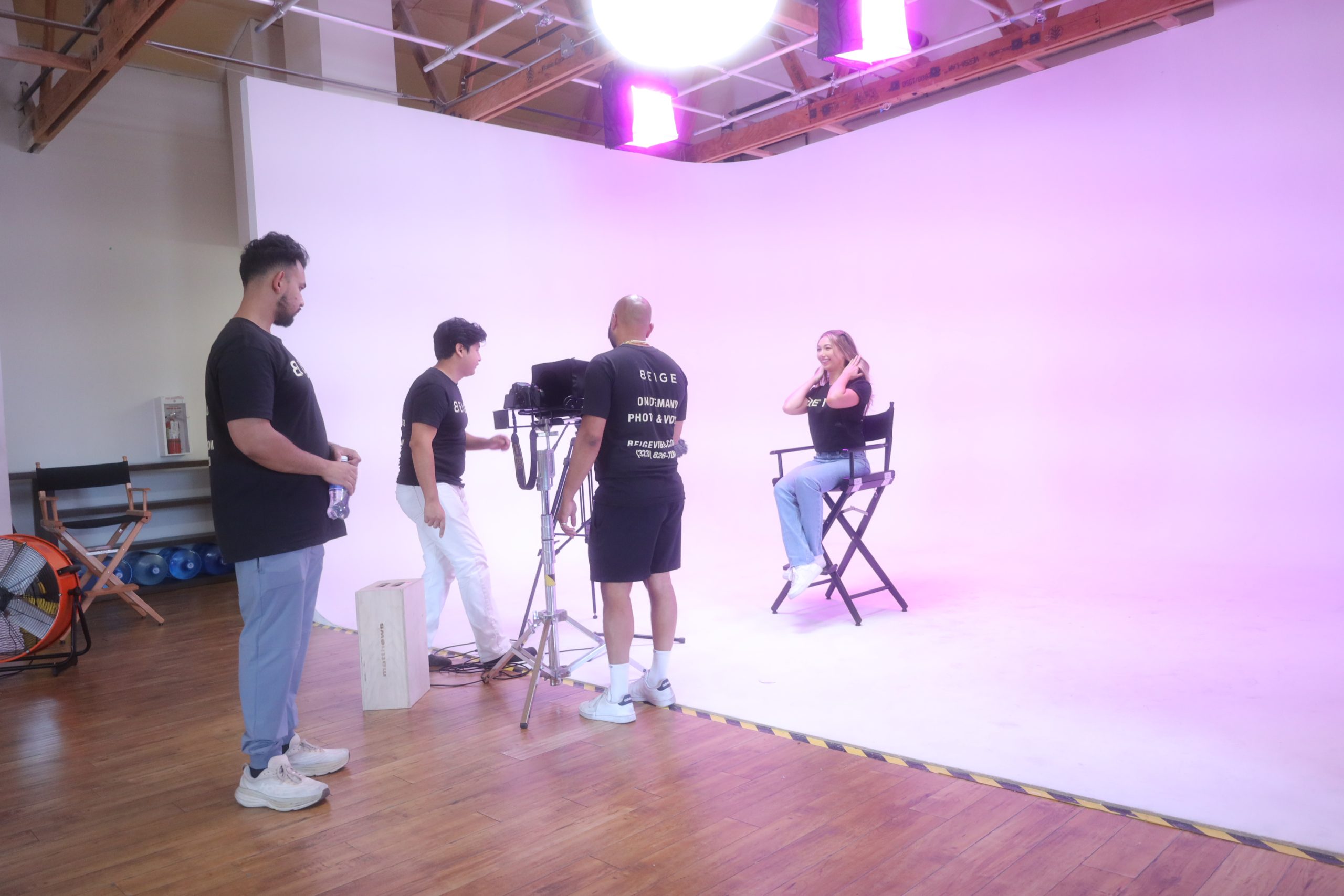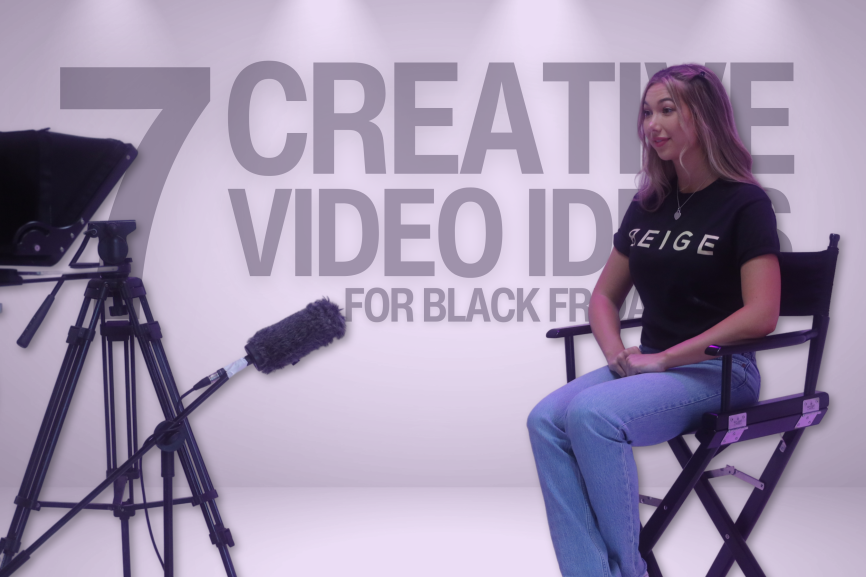No products in the cart.

Engagement Photo Session Tips: A Comprehensive Guide
Introduction: Everyone dreams of receiving a romantic proposal from their significant other. It resembles a childhood fantasy coming to pass. It really is a
Drones have revolutionized the field of videography, particularly in event coverage. The use of drones offers a range of advantages that can elevate the visual storytelling and capture breathtaking shots. In this article, we will explore why drones in videography are transforming event coverage and discuss the benefits they bring to the table.
Advantages of Using Drones in Videography:
1. Aerial Perspective: Drones provide a unique and stunning aerial perspective that was once only attainable through expensive equipment like helicopters. This perspective adds a captivating dimension to event videos, offering a bird’s eye view of the surroundings.
2. Creative Shots and Angles: With drones, videographers can capture shots and angles that were previously impossible or difficult to achieve. From dynamic tracking shots to sweeping panoramic views, drones enable videographers to showcase events from fresh and innovative perspectives.
3. Smooth and Stable Footage: Advancements in drone technology have made it possible to capture exceptionally smooth and stable footage. Built-in stabilization systems and gimbal technology ensure that the shots remain steady, resulting in professional-quality videography.
4. Enhanced Flexibility and Mobility: Drones offer unmatched flexibility and mobility, allowing videographers to navigate through various environments easily. They can easily follow the action, cover large areas, and access challenging or remote locations, providing comprehensive event coverage.
Considerations and Safety Measures:
Before embarking on drone videography, it is important to be aware of certain considerations and safety measures. Some key factors to keep in mind include:
1. Knowledge of Local Regulations: Familiarize yourself with the local regulations and permits required for drone flights in the intended filming area. Adhering to these rules ensures safe and legal operation.
2. Weather Conditions and Flight Restrictions: Check weather conditions and be aware of any flight restrictions or no-fly zones in the area. Drones should not be flown in adverse weather conditions or restricted airspace for the safety of everyone involved.
3. Battery Life and Equipment Maintenance: Ensure that the drone batteries are fully charged before the shoot and have spare batteries on hand. Regularly maintain and inspect the drone to minimize any risk of malfunction during the event.
Preparing for Aerial Videography:
To make the most of drone videography, certain preparations are necessary. Consider the following steps:
1. Choosing the Right Drone: Select a drone model that aligns with your specific videography needs, including factors such as flight time, camera capabilities, and maneuverability.
2. Understanding Flight Modes and Camera Settings: Familiarize yourself with the drone’s flight modes and camera settings to optimize the footage captured. This includes understanding exposure, resolution, frame rates, and other settings.
3. Ensuring Proper Safety and Licensing: Prioritize safety by obtaining proper licensing or certifications for drone operation. This demonstrates professionalism and compliance with legal requirements.
Getting Started with Drone Videography:
Once adequately prepared, it’s time to begin using drones for event videography. Consider the following steps:
1. Planning and Storyboarding: Develop a clear plan and storyboard for the footage you want to capture. Identify key moments and sequences to ensure a cohesive narrative in the final video.
2. Conducting Test Flights and Practicing: Prior to the event, conduct test flights to familiarize yourself with the drone’s controls and capabilities. Practice different flight maneuvers and shots to build confidence and improve your skills.
3. Capturing Cinematic Shots and Transitions: During the event, focus on capturing cinematic shots and smooth transitions that enhance the visual storytelling. Experiment with different angles, movements, and compositions to create captivating footage.
Post-Production Tips for Drone Footage:
Once the event is over and the footage has been captured, post-production plays a crucial role in refining the final output. Consider the following tips:
1. Editing and Enhancing Footage: Use video editing software to trim, stitch, and enhance the drone footage. Adjust colors, contrast, and saturation to achieve a visually appealing result.
2. Incorporating Graphics and Sound Design: Enhance the video’s impact by incorporating graphics, titles, and sound design. Adding overlays, captions, and a fitting soundtrack can elevate the overall viewing experience.
3. Optimizing the Final Video Output: Ensure that the video is optimized for different platforms and devices. Consider exporting in various resolutions and formats to cater to the specific viewing needs of your target audience.
Embracing the Creative Potential of Drones in Videography:
With their ability to capture breathtaking aerial shots and add a unique perspective, drones have opened up new creative possibilities in event coverage. By harnessing the advantages of drones, videographers can deliver visually stunning and immersive event videos that captivate audiences.
Pro-tip: Incorporate drone shots strategically to add excitement and visual interest to your event coverage.
Capture breathtaking perspectives, unleash your creativity, and ensure smooth, stable footage with the use of drones in videography. Discover the advantages they bring to event coverage in this section. From the majestic aerial perspective to the ability to capture unique shots and angles, drones revolutionize the way we document occasions. Their remarkable stability and flexibility empower videographers to navigate any space effortlessly. Unleash the potential of drones and take your videography to new heights.
Using drones in videography offers several advantages, including the ability to capture footage from an aerial perspective, which adds a unique and dramatic element to event coverage. With drones, videographers can capture creative shots and angles that were previously impossible or difficult to achieve. In addition, drones provide smooth and stable footage, thanks to advanced stabilization technology. They also offer enhanced flexibility and mobility, allowing videographers to navigate and capture footage in various environments. When using drones, it’s essential to ensure knowledge of local regulations, consider weather conditions and flight restrictions, and maintain proper battery life and equipment maintenance.
Creative shots and angles are a major advantage when utilizing drones in videography. Drones offer the ability for filmmakers to capture unique perspectives and stunning shots that were once only possible with costly equipment or helicopters. By using drones, you can achieve dynamic camera movements such as overhead shots, tracking shots, and low-angle shots, which add visual interest and depth to your footage. Furthermore, drones provide the flexibility to explore various angles and compositions, bringing creativity and innovation to your event coverage. The incorporation of drones in videography has truly revolutionized the way events are captured, granting filmmakers unparalleled creative opportunities.
To achieve smooth and stable footage in drone videography, it is crucial to consider a few key elements:
Fact: The use of advanced stabilization technologies in drones has revolutionized the field of videography by greatly improving the ability to capture smooth and stable footage.
When it comes to capturing extraordinary event footage, drone videography is on another level. But it’s not all about getting stunning shots; safety and precautions matter too. In this section, we’ll dive into the essential considerations and safety measures one must take while maneuvering drones for event coverage. From knowing local regulations to keeping an eye on weather conditions and flight restrictions, not to mention managing battery life and equipment maintenance, we’ll cover it all. So buckle up and get ready to soar to new heights with your event videography!
To guarantee the safety and compliance of drone videography, having knowledge of local regulations is of utmost importance. It is crucial to familiarize yourself with airspace restrictions, permits, and any specific rules established by local authorities. By adhering to these regulations, you not only protect public safety but also preserve the integrity of your footage. It is essential to conduct thorough research and understand these guidelines to avoid any legal issues that may arise from unauthorized drone use. Staying updated on any changes or updates to the regulations ensures continuous compliance during aerial videography. Acquiring knowledge about local regulations is vital for a successful and responsible drone videography experience.
| Weather Conditions and Flight Restrictions | Weather Conditions and Flight Restrictions |
| 1. Wind speed and direction | 1. Airspace regulations |
| 2. Rain and precipitation | 2. No-fly zones |
| 3. Fog and low visibility | 3. Restricted areas |
| 4. Extreme temperatures | 4. Proximity to airports |
| 5. Thunderstorms and lightning | 5. Privacy laws |
Throughout history, Weather Conditions and Flight Restrictions have played a crucial role in aviation. From the early days of the Wright brothers to the modern era of drones, understanding and managing these factors is essential for safe and efficient operations. Weather Conditions and Flight Restrictions influences the safety and stability of flights, and Flight Restrictions ensure compliance with regulations and protect public and private spaces. By navigating these challenges, pilots and operators can harness the full potential of drone technology while prioritizing safety and responsibility.
Battery life and equipment maintenance are crucial considerations in drone videography. It is important to prioritize battery life and ensure that the drone’s battery is fully charged before each flight to maximize flight time. Additionally, regularly inspecting and maintaining the equipment is essential for optimal performance and safety. To achieve this, it is necessary to keep the propellers clean and secure, check for any loose connections, and regularly update the firmware. These tasks are key factors in maintaining the drone’s performance. Moreover, having backup batteries and spare parts readily available can help avoid any potential interruptions during shoots.
By emphasizing the importance of battery life and equipment maintenance, videographers can ensure smooth and efficient drone operations. With regards to battery life, it is highly recommended to minimize the use of high-power flight modes and consider carrying spare batteries for longer shoots. These measures contribute to prolonging the overall battery life and maximizing the efficiency of the drone. Therefore, by incorporating these practices into their routine, videographers can guarantee optimal drone performance and uninterrupted filming sessions.
Capture breathtaking aerial footage and take your event coverage to new heights with aerial videography. In this section, we’ll dive into the crucial aspects of preparing for this exciting endeavor. Discover how to select the perfect drone to suit your videography needs, master the intricacies of flight modes and camera settings, and ensure safety and proper licensing for smooth and professional operations. Get ready to soar above the rest and harness the power of drone technology for unparalleled event cinematography.
When it comes to videography, selecting the appropriate drone is vital to achieve optimal performance and top-notch footage.
Fact: DJI, a leading manufacturer of drones, offers an array of options suitable for various levels of expertise, ranging from beginner-friendly models to professional-grade drones equipped with advanced camera systems.
Mastering Flight Modes and Camera Settings for Successful Drone Videography
Understanding flight modes and camera settings is crucial for achieving stunning footage with your drone. By familiarizing yourself with the following steps, you’ll navigate this aspect with ease:
By fully grasping flight modes and camera settings, you will unlock the full creative potential of your drone, allowing you to capture breathtaking footage for your event coverage.
Ensuring Proper Safety and Licensing is of utmost importance when participating in aerial videography with drones. It is crucial to familiarize yourself with local regulations that govern the usage of drones in order to avoid any legal issues and ensure compliance. Additionally, it is essential to take into account weather conditions and flight restrictions to prevent any accidents or damage to the drone. Another key consideration is to regularly maintain and monitor the battery life of the drone, as well as the overall equipment, to ensure optimal performance and prevent any mishaps during the filming process. By strictly adhering to these safety measures, you can confidently enjoy your aerial videography experience without any incidents.
Ready to take your event coverage to new heights? In this section, we’ll dive into the exciting world of drone videography and get you started on capturing truly remarkable footage. From planning and storyboarding to conducting test flights and practicing your piloting skills, we’ll cover it all. Learn how to capture breathtaking cinematic shots and seamless transitions that will elevate your event coverage to the next level. So, fasten your seatbelt and get ready to soar with drones in videography!
Planning and storyboarding are essential steps in achieving successful drone videography for event coverage. Here is a breakdown of the key steps to consider:
By following these steps and dedicating time to practicing test flights and practicing, you can enhance your skills and confidently capture stunning footage in your drone videography endeavors.
To capture captivating cinematic shots and transitions in drone videography, follow these steps:
Plan your shots: Create a shot list and storyboard to visualize the desired shots and transitions.
Understand flight modes and camera settings: Familiarize yourself with the different flight modes and camera settings on your drone to effectively capture the cinematic shots and transitions.
Master flight techniques: Practice flying smoothly and steadily to ensure stable footage during transitions.
Experiment with different angles and movements: Explore various angles, tilts, pans, and tracking shots to add visual interest to your footage.
Utilize cinematic techniques: Incorporate techniques like the Dutch angle, the rule of thirds, and leading lines to enhance the overall cinematic feel of your shots.
Create seamless transitions: Use smooth movements and transitions to connect different shots and create a cohesive visual narrative.
By following these steps, you can achieve breathtaking cinematic shots and transitions that elevate the quality of your event coverage through drone videography.
When it comes to taking your event coverage to new heights, drone footage is a game-changer. But capturing breathtaking aerial shots is just the beginning. In this section, we’ll explore the post-production tips that will elevate your drone footage to the next level. From editing and enhancing footage to incorporating graphics and sound design, we’ll unlock the secrets to creating stunning visual stories. Plus, we’ll delve into optimizing the final video output for maximum impact. Get ready to unleash the true creative potential of drones in videography!
By carefully editing and enhancing drone footage, you can create stunning videos that effectively capture the beauty and uniqueness of aerial perspectives.
Incorporating graphics and sound design is essential in drone videography to enhance the visual and auditory experience of the footage. Here are some valuable tips for effectively integrating graphics and sound design into your drone videos:
By integrating compelling graphics and sound design, you can significantly enhance the impact and quality of your drone videography, providing a captivating and immersive experience for your audience.
Pro-tip: To make your drone footage truly stand out from the crowd, don’t hesitate to experiment with various editing techniques and effects. This will add a unique touch and make your videos visually striking.
Embracing the creative potential of drones in videography unleashes a plethora of possibilities for capturing breathtaking and one-of-a-kind visuals. By incorporating drones into their craft, videographers can effortlessly achieve majestic aerial perspectives, capture imaginative shots and angles, and acquire flawlessly smooth and stable footage. The unmatched flexibility and mobility of drones enable the creation of dynamic and immersive storytelling experiences. However, fully embracing this extraordinary potential necessitates meticulous consideration accompanied by the utmost adherence to safety measures. Videographers must be well-versed in local regulations, consistently monitor weather conditions, and rigorously maintain their equipment. Proper preparation for aerial videography entails selecting the most suitable drone, mastering various flight modes and camera settings, and ensuring the acquisition of the necessary safety certifications. Moreover, valuable post-production tips involve skillfully editing and enhancing footage, integrating captivating graphics and sound design, and maximizing the optimization of the final video output.
Drones have revolutionized event coverage by providing a fresh perspective and adding a new dimension to capturing live events. They offer advantages such as capturing dynamic aerial shots, maneuvering around obstacles, and reaching inaccessible areas. Livestreaming drone footage allows viewers to experience events in real-time from a unique perspective, enhancing the overall event experience.
The benefits of using drones in videography for event coverage include capturing breathtaking aerial views, providing immersive experiences, and offering a comprehensive view of the event. Drones can capture stunning visuals that were once logistically challenging or expensive to obtain. They also allow for dynamic footage, smooth maneuvers, and unique angles, enhancing the overall cinematic storytelling of the event.
Drones can enhance brand image and reputation for businesses by showcasing innovation and creativity. A professionally produced drone video can serve as a powerful promotional tool, generating excitement, boosting attendance, and increasing engagement. It allows businesses to demonstrate their commitment to utilizing cutting-edge technology and providing unique experiences for their target audience.
Drones offer cost-effective solutions for event coverage compared to traditional aerial footage methods. They are a more affordable alternative to hiring helicopters or expensive equipment. With the rapid advancement of technology, drones equipped with high-resolution cameras and stabilization systems can provide high-quality footage at a fraction of the cost, making stunning shots accessible to events of all scales and budgets.
Drones can bring events to life by providing interactive elements and unique visual effects. They can be used to create light shows, capture unique angles, and add a cinematic touch to the event. Whether it’s capturing a grandeur of a stadium, creating dynamic reveals, or enhancing product showcases, drones have the capability to add an extra level of excitement and emotional impact to the event.
Expert drone pilots and video producers for live events offer a comprehensive range of services. They provide aerial cinematography, ground-level video capture, editing, and innovative solutions tailored to meet the specific needs of each client. With state-of-the-art equipment, including drones with stabilizing mechanisms, they approach each live event with creativity and seek unique angles and shots to make the event stand out.
Lorem ipsum dolor sit amet, consectetur adipiscing elit. Suspendisse varius
enim in eros elementum tristique.






